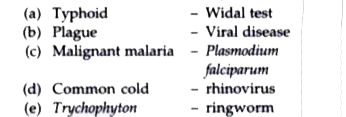Identify CORRECTLY matched pair.
Zygotene -Pairing of homologous chromosomes
Pachytene-Disjunction of hi homologous chromosomes
Diakinesis-Recombination of non sister chromatids of homologous chromosomes
Diplotene-Nucleolus disappears
The correct Answer is:A
To solve the question of identifying the correctly matched pair from the given options, we will analyze each option step by step.
Step 1: Analyze Option 1 - Zygotene
- Definition: Zygotene is the second stage of prophase I in meiosis.
- Function: During zygotene, homologous chromosomes begin to pair up and form synapses, which is the process of pairing.
- Conclusion: This option is correctly matched as it describes the pairing of homologous chromosomes.
Step 2: Analyze Option 2 - Pachytene
- Definition: Pachytene is the third stage of prophase I in meiosis.
- Function: In this stage, the paired homologous chromosomes become shorter and thicker, and crossing over occurs.
- Conclusion: The statement that pachytene means disjunction of homologous chromosomes is incorrect. Therefore, this option is not correctly matched.
Step 3: Analyze Option 3 - Diakinesis
- Definition: Diakinesis is the fifth and last stage of prophase I in meiosis.
- Function: In this stage, homologous chromosomes are fully separated, and the nuclear envelope breaks down.
- Conclusion: The statement that diakinesis involves recombination of non-sister chromatids is incorrect. Thus, this option is not correctly matched.
Step 4: Analyze Option 4 - Diplotene
- Definition: Diplotene is the fourth stage of prophase I in meiosis.
- Function: During diplotene, the homologous chromosomes begin to separate but remain connected at points called chiasmata.
- Conclusion: The statement that the nucleus disappears during diplotene is incorrect. Therefore, this option is also not correctly matched.
Final Conclusion
The only correctly matched pair is:
- Option 1: Zygotene - Correctly describes the pairing of homologous chromosomes.
- Definition: Zygotene is the second stage of prophase I in meiosis.
- Function: During zygotene, homologous chromosomes begin to pair up and form synapses, which is the process of pairing.
- Conclusion: This option is correctly matched as it describes the pairing of homologous chromosomes.
- Definition: Pachytene is the third stage of prophase I in meiosis.
- Function: In this stage, the paired homologous chromosomes become shorter and thicker, and crossing over occurs.
- Conclusion: The statement that pachytene means disjunction of homologous chromosomes is incorrect. Therefore, this option is not correctly matched.
- Definition: Diakinesis is the fifth and last stage of prophase I in meiosis.
- Function: In this stage, homologous chromosomes are fully separated, and the nuclear envelope breaks down.
- Conclusion: The statement that diakinesis involves recombination of non-sister chromatids is incorrect. Thus, this option is not correctly matched.
- Definition: Diplotene is the fourth stage of prophase I in meiosis.
- Function: During diplotene, the homologous chromosomes begin to separate but remain connected at points called chiasmata.
- Conclusion: The statement that the nucleus disappears during diplotene is incorrect. Therefore, this option is also not correctly matched.
The only correctly matched pair is:
- Option 1: Zygotene - Correctly describes the pairing of homologous chromosomes.
Similar Questions
Knowledge Check
Identify the correct matched pair.
AMontreal protocol - Global warmingBRamsar convention - Groundwater pollutionCKyoto protocol - Climate changeDBasel convention - Biodiversity conservationIdentify the correctly matched pair.
AGir forest - RhinoBKaziranga - ElephantCCorbett park - AvesDRann of Kutch - Wild ass

